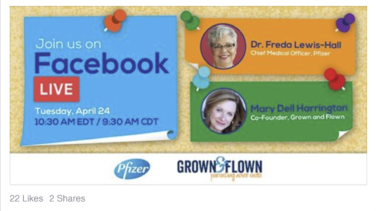The number of pharma companies leveraging social listening analytics and insights is rising steadily, although the practice is still far from a standard component of industry research. Specifically, one tactic gaining in popularity: To build upon information gleaned from broad-based public social media platforms by coupling the insights with active listening across closed networks of healthcare professionals. Such forums, in which the credentials of the participants have been verified, and that are built around specific professional interests and specialties, are proving to yield rich insights more meaningful than what can be gathered by crawling the web. The conversations taking place in these closed communities complement social listening in public forums in the same way that focus groups complement secondary research.
Social Listening in Broad-Based Media
Estimates vary on the number of pharmaceutical brands that regularly “listen in” on social media channels such as Facebook, Twitter, and YouTube to better understand the marketplace. According to an IMS Health survey conducted in 2015, about 40% of brands have yet to adopt the practice. As regulatory bodies issue more precise guidance, and as service providers do more to synthesize the data and provide recommendations, expect social listening to become more mainstream.
- Pharmaceutical companies can use the information they “hear” via social media to:
- Understand trends and prevailing perceptions and sentiments about a company or brand.
- Gain insight into how patients cope with, and manage, their disease.
- Spot—and contain—potential threats.
- Discover unmet HCP informational needs.
- Create better campaigns through messaging that resonates with patient and HCP audiences.
Focus and Relevancy
Listening via any digital medium is only of value in these ways if the information garnered is relevant to the brand. The best listening exercises carefully narrow the search through keywords and filters to curate the almost limitless amount of information out there. Another option that can be used to augment broad-based listening is to target the audience—in other words to listen in on conversations within very carefully defined groups of specialized individuals (i.e., healthcare providers). Closed online provider communities exist as potent digital forums built around a common theme and are restricted to participants whose qualifications have been verified. Oncologists, for example, know that they’re exchanging information with other oncologists.
For HCPs, such communities provide opportunities to learn from, and work with, trusted sources to improve patient care and solve complex problems related to their area of practice. Community members are able to develop a rapport—readily collaborating, sharing views, and exchanging information. The discussions that take place in such forums are extremely vibrant and therefore yield deep insights that are unlikely to be found in public digital settings.
A Specialized Research Environment
Niche communities of HCPs can be used as a pool from which to select members of a virtual advisory board, but they also provide ad hoc primary research opportunities. Brand managers can use such forums to:
- “Listen in” on meaningful digital conversations among community members, performing analyses based on specific keywords.
- Seed a discussion among a very select group of KOLs in a by-invitation-only virtual meeting. When a small set of KOLs is given such an opportunity, they relish the ability to confer and debate. They tend to “feed” off of one another’s ideas and opinions, sparking a very deep and relevant discourse. The medium seems to encourage equal participation from all participants, unlike in-person meetings where a few outspoken participants can easily dominate the conversation.
The subsequent analysis can:
- Provide robust insights into the participants’ mindsets and needs, supporting the brand’s research objectives.
- Confirm hypotheses formed via listening in other social media.
- Ensure a 360° view of the market by adding a detailed provider view to broad public perceptions.
The last point is particularly important, as brand managers aim to fully understand the views of both their patient and physician audiences to develop effective marketing strategies. If, for example, a company deduced from broad-based social media listening that patients were dissatisfied with its product but had not gathered insights from physicians, it might miss the fact that physicians were quite impressed with the drug’s performance. Conversely, if the company only heard the physician perspective, it might not understand that patient non-compliance was high. In this case, the company likely would not have realized that the solution would be to help physicians educate patients about the importance of compliance.
Vibrant Conversations, In-Depth Insights
When the online community is built around a narrow, shared topic of interest, discussions are potent and germane to very specific lines of inquiry. To demonstrate this point, we share just one comment from a conversation that took place in an online community among physicians regarding their employment affiliation. The research hypothesis: Physicians were moving to hospital/health system employment in response to financial pressures and a need for more stability. This hypothesis was borne out, but what could not have been predicted—or captured via more general social media—was the sheer agony that the employment dilemma was causing physicians. One participant said:
“The regulatory, depressed compensation, and pure greed motivators that drive the for-profit insurance industry and the wild-type practice environment are driving the faint-of-heart, but realistic younger physicians to the lesser of evils: The corporate structure of healthcare delivery systems. A major benefit is the minimal overhead and ability to service large education debt in the corporate environment. The downside, not seen initially, is the need to serve the bottom line. Is one a doctor or an employee?”
For Best Results…
Listening sessions can be as free form, or as structured, as a company prefers. Companies can monitor spontaneous conversations, prompt conversations with specific questions, or have a moderator oversee the conversation and ask for clarification as needed. Participation can be open to the entire niche community, or limited to select individuals (usually no more than 12 at one time) who have been pre-screened (based on their practice area, patient types, prescribing practices, and geography, for example) and specially invited.
Typically, in prompted conversations, no more than 12 questions are presented. Companies can decide if they want to pose all of the questions at once, or stagger their release over a couple of weeks. The results, of course, should be synthesized in order to be actionable, and should be presented with recommendations for action.
As pharmaceutical companies learn how best to take advantage of social media listening, they should be aware of the complementary research possibilities within niche communities of specialized HCPs. The detailed findings are typically eye opening and often have a significant impact on brand strategy.






